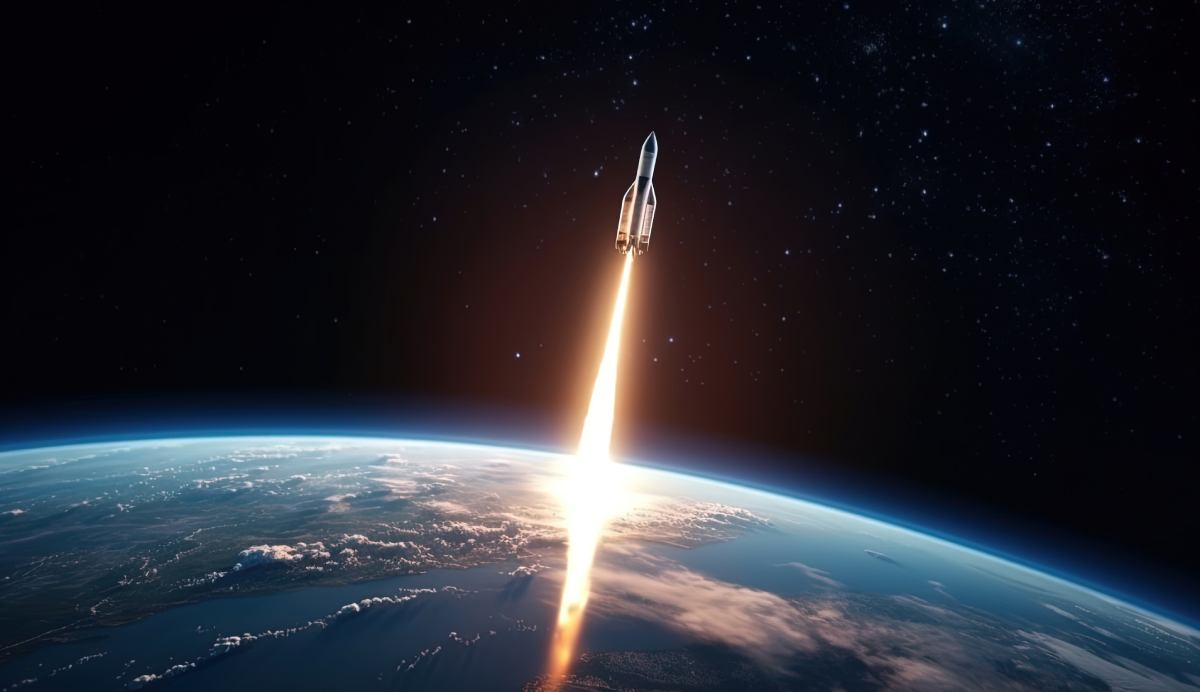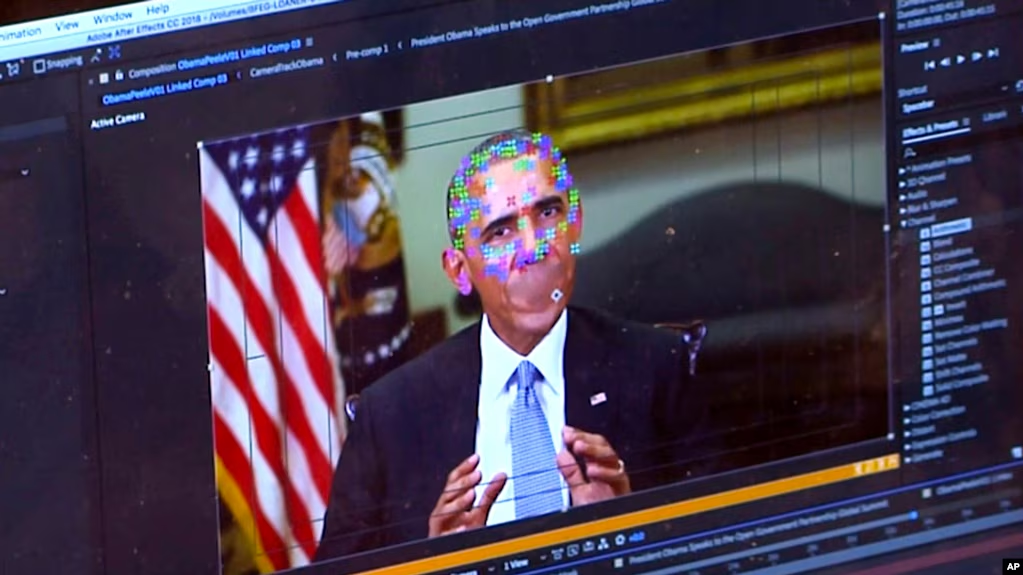The question of whether humanity should venture into space is often met with a counter-argument: "Shouldn't we fix Earth's problems first?" It's a valid point. Our planet faces numerous challenges, from climate change and poverty to social inequality. However, dismissing space exploration entirely overlooks its profound benefits and the fundamental nature of human curiosity.
Think of it this way: progress has always been driven by our innate desire to understand the unknown. From the first humans who dared to explore beyond their immediate surroundings to the scientists peering into the depths of the universe, this quest for knowledge is what defines us.
The Drive to Discover: Why We Explore
The core of scientific advancement lies in asking "how" and "why." Without these questions, we stagnate. Space exploration pushes us to develop new technologies, understand fundamental physics, and expand our understanding of the universe. This knowledge isn't just theoretical; it has practical applications that benefit life on Earth.
Consider the technologies developed for space travel: satellite communication, GPS, advanced materials, and medical imaging techniques. These innovations have revolutionized our daily lives. Weather forecasting, disaster management, and global communication all rely on space-based technologies.
It's true that science can be misused, as history has shown. But to condemn it entirely is to throw the baby out with the bathwater. Science is a tool, and like any tool, its impact depends on how we use it. We must strive to use it responsibly, focusing on its potential for good.
The Accelerating Pace of Innovation
The speed of technological advancement is staggering. The examples given, from photography to mobile phones, illustrate this exponential growth. The time required to develop new technologies has drastically decreased. This trend suggests that the next century will bring even more transformative innovations.
This rapid pace of innovation is both exciting and daunting. It presents us with immense opportunities but also demands careful consideration of the ethical implications. We must ensure that technological progress serves humanity as a whole, rather than exacerbating existing inequalities.
Practical Advice: Embrace lifelong learning. The world is changing rapidly, and staying informed is crucial. Cultivate a curiosity for new technologies and their potential impact.
Overcoming Limitations: Human Ingenuity
Throughout history, humans have defied limitations. We've conquered the skies, explored the depths of the ocean, and now, we're reaching for the stars. This is a testament to human ingenuity and the power of collaboration.
The human spirit is built to overcome limitations. The saying, "water is for fish, the sky is for birds, and the land is for humans," is a good example of a perceived limitation. Humans have proved that they can go beyond their perceived boundaries.
Practical Advice: Foster a culture of innovation. Encourage experimentation and problem-solving in your community. Support initiatives that promote STEM education and research.
Addressing Earth's Challenges: A Long-Term Perspective
One of the primary motivations for space exploration is the long-term survival of humanity. Earth's resources are finite, and our population is growing. As the population increases, so do the demands on our planet.
The concerns about food shortages and resource depletion are valid. Current agricultural practices are unsustainable, and climate change is exacerbating these issues. Space exploration offers potential solutions, such as asteroid mining for resources and the development of closed-loop ecosystems for food production.
The issue of overpopulation is complex. While scientific solutions like birth control are available, social and cultural factors play a significant role. Addressing this requires a multi-faceted approach, including education, economic development, and empowering women.
Examples:
- Asteroid Mining: Companies are developing technologies to extract valuable resources from asteroids, potentially providing a sustainable source of materials for future generations.
- Closed-Loop Ecosystems: Research is underway to create self-sustaining habitats that can grow food and recycle waste, potentially enabling long-term space missions and future colonies.
- Remote Sensing: Satellites monitor crop health, deforestation, and water resources, providing crucial data for sustainable resource management.
Insights:
- Planetary Protection: Exploring other celestial bodies requires strict protocols to prevent contamination from Earth-based microbes and to protect potential extraterrestrial life.
- Space Law: International agreements are needed to govern the use of space resources and to ensure equitable access for all nations.
- Ethical Considerations: The potential for terraforming other planets raises ethical questions about our responsibility to preserve existing ecosystems and to avoid repeating the mistakes of the past.
Practical Advice:
- Support Sustainable Practices: Reduce your environmental footprint by conserving resources, recycling, and making conscious consumer choices.
- Advocate for Responsible Population Growth: Support initiatives that promote education and access to family planning services.
- Engage in Citizen Science: Contribute to scientific research by participating in citizen science projects related to space exploration and environmental monitoring.
Beyond Survival: Expanding Our Horizons
Space exploration is not just about survival; it's about expanding our horizons and pushing the boundaries of human potential. It's about inspiring future generations to dream big and to pursue careers in science and technology.
The search for extraterrestrial life is another compelling motivation. Discovering life beyond Earth would revolutionize our understanding of biology and the universe. It would also raise profound philosophical questions about our place in the cosmos.
Practical Advice:
- Encourage Curiosity: Foster a love of learning and exploration in children.
- Support Space Exploration Initiatives: Advocate for increased funding for space research and development.
- Stay Informed: Follow the latest developments in space exploration and engage in discussions about its implications.
In conclusion, space exploration is not an escape from Earth's problems; it's an investment in our future. It's a testament to human ingenuity and our unwavering quest for knowledge. By embracing the challenges and opportunities of space, we can create a better future for humanity, both on Earth and beyond.
The idea of humans needing to find a new home beyond Earth isn't just a science fiction trope anymore; it's a potential future we might face. The pressure of overpopulation, resource depletion, and climate change is real. It's not about escaping Earth right now, but preparing for a possible future where our planet may not be as hospitable. This isn't just a concern for scientists; it's a collective responsibility. Each of us, in our own way, can contribute to ensuring a sustainable future, whether it's through conscious consumption, advocating for environmental policies, or supporting scientific endeavors.
A common argument against space exploration is that the massive funds spent on it could be better used to solve pressing issues here on Earth, like poverty or hunger. While this argument has merit, it overlooks a crucial point: the nature of global economics. Developed nations rarely offer aid without expecting something in return. History shows that investments are often tied to creating new markets, securing resources, or expanding business opportunities. Space exploration, while seemingly distant, can drive innovation that directly benefits us on Earth. For example, satellite technology, initially developed for space, has revolutionized communication, navigation, and weather forecasting. These advancements have far-reaching impacts on various sectors, including agriculture, disaster management, and healthcare.
Consider the issue of food security. In countries like India, significant food loss occurs due to pests like rats. Addressing this isn't just a matter of technology; it's also a matter of cultural and religious sensitivities. While technology can provide solutions, like advanced pest control systems, implementation requires addressing deeply ingrained beliefs. Practical advice would be to focus on community-based solutions, educating people about sustainable pest control methods that align with their cultural values. For instance, promoting natural predators of rats or improving food storage facilities can be effective. Similarly, the issue of malnourished livestock is a complex one. Improving animal husbandry practices, providing access to better feed, and promoting sustainable farming techniques are crucial. These issues illustrate that progress requires a multi-faceted approach, combining technology with cultural understanding and practical solutions.
Despite these challenges, India's technological advancements are undeniable. The rapid growth of digital connectivity and technological innovation creates a fertile ground for progress. However, this progress must be directed towards sustainable development and long-term solutions. Space exploration plays a vital role in this. It provides a unique perspective, forcing us to think beyond immediate needs and consider the long-term future of humanity. The technologies developed for space exploration often have applications in various fields, from medicine to materials science. For example, advancements in life support systems for astronauts can lead to improved medical equipment for patients on Earth.
Understanding our planet requires looking beyond its boundaries. Space exploration allows us to study other celestial bodies, gaining insights into the formation and evolution of our solar system. By studying other planets, we can learn more about climate change, geological processes, and the potential for life beyond Earth. For example, studying Mars helps us understand how planets can lose their atmospheres and how climate change can transform a planet. Investing in space exploration can also inspire future generations of scientists and engineers, fostering a culture of innovation and discovery.
To encourage greater participation in space exploration, governments can promote it as a distinct and exciting field. By investing in research and development, providing educational resources, and showcasing the potential benefits of space exploration, they can attract more talent and resources. Public-private partnerships can also play a crucial role in driving innovation and accelerating progress. For example, collaborations between space agencies and private companies can lead to the development of new technologies and the commercialization of space-related services.
The mystery of the Sun's formation and eventual demise highlights the importance of space exploration. While we have theories about its origin and lifespan, we need to gather more data to understand these processes fully. Understanding the Sun's behavior is critical for predicting solar flares and other space weather events that can disrupt communication systems and power grids on Earth. Space exploration allows us to monitor the Sun's activity and develop strategies to mitigate potential risks. Practical advice in this regard would be to support institutions that research solar physics, and advocate for better space weather forecasting systems.
The persistent stories of "flying saucers" and extraterrestrial life underscore our fascination with the unknown. While the existence of alien life remains speculative, the search for it drives technological innovation and expands our understanding of the universe. The argument that space research is expensive is valid, but it's essential to recognize the long-term benefits. Many technologies we take for granted today, like GPS, satellite television, and medical imaging, were developed as a result of space research. The benefits are not always immediate, but they are often transformative.
The example of life-saving medical devices from the United States highlights the direct link between space research and technological advancement. The development of breathing machines, for instance, was driven by the need to create life support systems for astronauts in space. This research led to advancements in respiratory technology that have benefited countless people on Earth. Similarly, advancements in materials science, robotics, and artificial intelligence, driven by space exploration, have applications in various fields, including medicine, manufacturing, and transportation. Practical advice for any nation would be to encourage its scientists to research these technologies, and find ways to produce them domestically. Importing technology is not a sustainable solution.
In conclusion, the need to prepare for a future beyond Earth is not a distant possibility, but a potential reality. Space exploration offers a unique perspective and drives innovation that benefits us on Earth. By investing in research, promoting education, and fostering collaboration, we can ensure a sustainable future for humanity, both on Earth and beyond. It's not about abandoning our planet; it's about expanding our horizons and ensuring our survival.
Let's talk about some incredible advancements and intriguing mysteries, breaking them down into simple terms.
First, consider the life-saving technology of the heart pacemaker. Imagine a tiny, battery-powered device, smaller than a matchbox, implanted under the skin. This device continuously monitors the heart's rhythm. If the heart beats too slowly or irregularly, the pacemaker sends out gentle electrical pulses to regulate it. This technology has revolutionized cardiac care, allowing people with heart conditions to live longer, healthier lives.
Here's a deeper dive: Pacemakers aren't just one-size-fits-all. They're tailored to individual needs. Some pacemakers only activate when the heart rate drops too low, while others constantly regulate the rhythm. Modern pacemakers can even adjust their pacing rate based on the person's activity level, increasing the heart rate during exercise and slowing it down during rest. The battery life, typically around 5-10 years now, is a crucial aspect. When the battery depletes, a relatively simple procedure is performed to replace the pacemaker generator, leaving the leads connected to the heart in place. This avoids needing to perform a full open chest surgery again. It’s important to understand that regular checkups are crucial for pacemaker maintenance. Doctors use specialized equipment to monitor the device's function, adjust settings, and ensure it's operating correctly. Lifestyle adjustments, like avoiding strong magnetic fields, might be necessary for some individuals with pacemakers.
Next, let's explore the fascinating world of materials science and its applications in both space exploration and everyday life. The "honeycomb sheets" mentioned are a perfect example. These structures, inspired by the natural honeycomb of bees, are incredibly strong yet lightweight. This makes them ideal for applications where weight is critical, such as spacecraft and aircraft. Think of it like this: a honeycomb structure provides maximum strength with minimal material, creating a robust and efficient design. In car manufacturing, these materials are used to improve the structural integrity of vehicles while reducing weight, leading to better fuel efficiency. They're also used in everything from packaging to building construction, providing a strong, lightweight solution.
The concept of interplanetary travel, once relegated to science fiction, is becoming increasingly plausible. Space agencies and private companies are investing heavily in research and development, focusing on technologies like advanced propulsion systems, life support systems, and radiation shielding. While the challenges are immense, the potential rewards are equally significant. Imagine future generations exploring Mars, establishing human settlements on other planets, and gaining a deeper understanding of the universe. It's not just about reaching other planets; it's about pushing the boundaries of human knowledge and innovation. Consider the recent advancements in reusable rockets, which drastically reduce the cost of space travel, making it more accessible. Or the development of advanced life support systems that can recycle air and water, essential for long-duration space missions.
Now, let's delve into the intriguing topic of unidentified flying objects (UFOs), or as they are now often referred to, unidentified aerial phenomena (UAPs). The first recorded sightings in America and West Germany sparked a debate that continues to this day. It's crucial to approach this topic with a balanced perspective, considering both the possibilities and the limitations of our understanding.
It's true that many reported sightings can be attributed to misidentification of known objects or phenomena. Balloons, drones, atmospheric anomalies, and even optical illusions can be mistaken for something extraordinary. However, some sightings, particularly those reported by trained observers like pilots, defy conventional explanations. Pilots are trained to identify aircraft, weather patterns, and other aerial phenomena. Their observations carry weight because they are professionals who rely on their senses and training to ensure safety. When multiple pilots report similar sightings, it's difficult to dismiss them entirely.
Think of the pilot who has extensive training in aircraft identification, weather patterns, and the physics of flight. Their visual acuity is tested regularly, and they are constantly aware of their surroundings. If such an individual reports seeing an object performing maneuvers beyond the capabilities of known aircraft, it warrants investigation. Furthermore, the fact that radar systems often corroborate these sightings adds another layer of credibility. Radar operators are trained to interpret radar data, and their reports of unusual radar returns cannot be easily dismissed.
Here's a deeper look at the reported incidents:
-
February 5, 1965: The formation of a special division to investigate UFO reports by the U.S. government highlights the seriousness with which some officials treated the phenomenon. This suggests that even within government circles, there was a recognition that some sightings could not be easily explained. The involvement of radar operators adds credibility to the investigation, as radar provides objective data that can be analyzed and verified.
-
January 29, 1965: The sighting of balloon-like objects traveling at 4,350 miles per hour at the Naval Airfield in Maryland is particularly intriguing. This speed is far beyond the capabilities of conventional balloons, suggesting either a misinterpretation of radar data or the presence of an unknown technology. The fact that two radar operators reported the same sighting strengthens the credibility of the report.
-
May 3, 1964: The multiple sightings in Canberra, Australia, with reports of objects changing size and flashing lights, suggest a complex and dynamic phenomenon. The fact that NASA investigated these sightings indicates that they were taken seriously by scientific authorities. The changing sizes of the objects could suggest a form of advanced propulsion or camouflage technology.
-
November 23, 1953: The incident involving Flight Lieutenant R. Wilson and the disappearance of his F-86 fighter jet is perhaps the most dramatic and unsettling. The merging of the flying saucer and the fighter jet on radar, followed by the disappearance of both, raises profound questions about the nature of the phenomenon. The extensive search of Lake Superior, with only traces of oil found, adds to the mystery. This incident highlights the potential risks associated with encountering UAPs and the need for further investigation.
It's also important to acknowledge the role of media sensationalism. While some journalists strive for accuracy, others may exaggerate or fabricate stories to attract attention. This can create a distorted perception of the phenomenon and make it difficult to separate fact from fiction. Critical thinking and a healthy skepticism are essential when evaluating UFO reports.
Ultimately, the question of whether we are alone in the universe remains unanswered. While many sightings can be explained by known phenomena, some remain unexplained. It's crucial to continue investigating these sightings with a scientific approach, using objective data and rigorous analysis. By doing so, we can gain a deeper understanding of the universe and our place within it.
Imagine starting your day with a routine patrol, only to encounter something that challenges your understanding of reality. That's precisely what happened to Sergeant Eugene Bertrand on September 13, 1965, in Exeter, New Hampshire. He found an elderly woman, clearly distressed, sitting near her car. She claimed a flying saucer had lifted her and transported her ten miles before dropping her off near Route 101. Initially, it's easy to dismiss such a story. It sounds unbelievable, even absurd. But what if it wasn't a one-off incident?
Sergeant Bertrand's skepticism began to waver when he learned that other people had reported similar experiences. Another officer, Gene Toland, had encountered a man with a similar tale of impending abduction. This wasn't just one person's imagination; it seemed to be a shared experience. This is a crucial point: when multiple people report the same unusual phenomenon, it warrants closer attention. It suggests something real is happening, even if we don't understand it.
The officers, acting on this growing suspicion, decided to investigate. They searched the area, hoping to find some tangible evidence. After two hours of searching, as they were returning, they stumbled upon a disturbing scene: six dead horses. The area was bathed in a faint red glow. Then, Sergeant Bertrand saw something large descending from the sky, emitting a red light. He immediately called Officer Toland. By this time, the red glow was visible across multiple locations, and another officer, Dave, arrived on the scene. He had initially dismissed the reports as fake, but the reality he witnessed changed his mind. This highlights a fundamental aspect of human psychology: we often resist believing what we cannot easily explain. But when faced with direct evidence, our beliefs can shift.
The Exeter incident triggered a formal investigation. 58 witnesses came forward, providing their accounts. A detailed report was compiled, but the nature of the "flying saucer" remained a mystery. This underscores a common challenge in investigating unexplained phenomena: even with numerous witnesses and detailed reports, conclusive answers can be elusive. Sometimes, we have to accept that we don't have all the answers.
Let's take a moment to consider the practical aspects of handling such situations. If you were a police officer faced with similar reports, what would you do? First, document everything meticulously. Record witness statements, take photographs, and collect any physical evidence. Second, collaborate with other agencies and experts. Involve scientists, researchers, and even psychologists to analyze the data. Third, remain open-minded but skeptical. Don't jump to conclusions, but don't dismiss possibilities either. Fourth, communicate with the public transparently, providing factual information and avoiding sensationalism.
Now, let's shift our focus to another intriguing incident. On May 5, 1967, Monsieur Malliate, the mayor of Marliens, France, discovered a strange crater in a clover field. The crater was large, 15.5 feet in diameter and one meter deep, and appeared to have been dug by a machine. At the bottom, there was another smaller hole, and the craters were filled with purple and white-colored soil. This incident raises several questions. What kind of machine could have created such a crater? Where did the unusual soil come from? These are the questions that investigators would need to address.
The Marliens crater highlights the importance of detailed observation and analysis. When encountering an unusual phenomenon, pay attention to every detail, no matter how small. Document the size, shape, and depth of any physical evidence. Collect soil or other samples for analysis. Take photographs and videos from multiple angles. And most importantly, record the location and time of the observation. This meticulous approach can provide valuable clues for future investigations.
The year 1967 saw numerous reports of unidentified flying objects. On November 6, 1967, a German television program, "Invasion from the Cosmos," featured a Lufthansa Airways captain and six other people who recounted their experiences. They had seen a flying object moving alongside their plane, just minutes before landing in San Francisco. When they reported their experience to a university in Colorado, they were told it was a piece of a rocket falling to Earth. However, the captain argued that it was impossible for a rocket piece to stay airborne for 15 minutes. This incident illustrates the challenge of interpreting eyewitness accounts. Even experts can offer explanations that don't quite fit the facts.
The captain's experience highlights the importance of critical thinking. Don't blindly accept explanations, even from experts. Question assumptions, consider alternative possibilities, and seek independent verification. In this case, the captain's knowledge of aviation allowed him to challenge the university's explanation.
Further reports from Europe added to the growing mystery. "Die Süddeutsche Zeitung, Munich" published reports on November 21 and 23, 1967, about UFO sightings over Europe. In Belgrade, numerous UFO-like ships were seen flying in the skies. A photographer captured images, suggesting the phenomenon was not normal. In Montenegro, UFOs were allegedly seen and believed to have caused forest fires. Authorities confirmed the fires but couldn't determine the cause. These reports demonstrate the global nature of the UFO phenomenon. Reports were coming from different countries, cultures, and languages, suggesting that whatever was happening was not limited to a specific region.
The forest fires in Montenegro raise a crucial question: how can we distinguish between natural phenomena and unexplained events? Wildfires are common, but if there's evidence suggesting an unusual cause, it warrants further investigation. This highlights the need for interdisciplinary collaboration. Fire experts, meteorologists, and other scientists should work together to analyze the evidence and determine the cause.
The stories presented here, from the elderly woman in Exeter to the Lufthansa captain and the reports from Europe, all point to one thing: the unknown. They remind us that there's still much we don't understand about the universe. They challenge us to remain curious, to question assumptions, and to seek answers. They also highlight the importance of open-mindedness, critical thinking, and collaboration in investigating unexplained phenomena.
In our daily lives, we can apply these principles by staying informed, engaging in critical thinking, and seeking out diverse perspectives. When faced with a problem, don't just accept the first explanation that comes along. Consider alternative possibilities, gather evidence, and collaborate with others. By doing so, we can enhance our understanding of the world around us and contribute to the ongoing quest for knowledge.
Unidentified Object Over Sofia: A Closer Look
Imagine looking up at the sky in the heart of Sofia, Bulgaria, and seeing something truly extraordinary: a flying saucer. That's exactly what happened, according to reports from Bulgarian news agencies. This wasn't a fleeting glimpse; the object was clearly visible to the naked eye and, incredibly, it seemed to change shape as people watched. It even appeared to emit rays of light. Many residents, curious and perhaps a little awestruck, turned to telescopes for a closer view. The object was described as flying under its own power, estimated to be about 18 miles above the ground.
Now, when something like this happens, you'd expect a thorough investigation, right? But the reality was quite different. The problem wasn't a lack of interest, but rather an overwhelming variety of interpretations. People's reactions ranged from the rational to the utterly fantastical. Some were so entrenched in their personal beliefs that they struggled to process what they'd seen objectively. Others claimed direct contact with aliens, while some religious groups interpreted the event as a divine sign. Each person viewed the sighting through their own lens, making a unified understanding nearly impossible. This is a common human trait; we tend to interpret new information in ways that reinforce our existing beliefs, even when that information challenges those beliefs.
This incident highlights a crucial point: the importance of critical thinking. When faced with something unknown, it's easy to jump to conclusions, especially when those conclusions align with our hopes or fears. But to truly understand the world around us, we need to approach such events with a healthy dose of skepticism and a willingness to consider multiple perspectives. Practical advice here is to always seek multiple sources of information. Don't rely on a single news outlet or social media post. Look for expert opinions, scientific analyses, and historical context. Also, remember that personal anecdotes, while interesting, are not always reliable. Human perception is fallible, and memories can be distorted.
The Sofia sighting wasn't an isolated incident, and the debate surrounding unidentified flying objects (UFOs) has been ongoing for decades. In 1967, at the seventh International UFO Researcher Day, Professor Herman Oberth, a pioneer in rocketry and space travel, made a compelling statement. He acknowledged that UFOs and aliens remained a mystery, a "problem" for science. But he also suggested that these objects could be spacecraft from another universe, and that studying them seriously could unlock invaluable knowledge. Oberth's plea for serious scientific investigation was largely ignored, however. The scientific community at the time was reluctant to embrace such a radical idea, often dismissing UFO reports as misinterpretations or hoaxes. This demonstrates the often slow pace of scientific progress. Sometimes, established paradigms need to be challenged before new discoveries can be made.
Oberth's perspective is crucial. He wasn't some fringe theorist; he was a respected scientist. His call for a serious approach underscores the need for open-mindedness in scientific inquiry. It's easy to dismiss what we don't understand, but true scientific progress comes from exploring the unknown, even when it seems improbable. Think about the history of science: many groundbreaking discoveries were initially met with skepticism and ridicule. The idea that the Earth revolved around the sun, for example, was once considered heresy. Practical advice for scientists and researchers is to develop a strong framework for evidence collection and analysis. Employ rigorous methods, maintain detailed records, and be transparent about your findings. And most importantly, be open to the possibility that you might be wrong.
The skepticism surrounding UFOs wasn't universal, however. In 1967, the German newspaper *Die Zeit* published an article titled "Second Thoughts," revealing that the Soviet Union, despite initially mocking American UFO reports, had begun its own investigation. They even appointed General Anatolyi Stolyakov to head their UFO research efforts. This suggests that even during the Cold War, when secrecy and suspicion were paramount, there was a recognition that UFOs warranted serious attention. This is a powerful example of how national security and scientific curiosity can intersect. The Soviets, likely motivated by both scientific interest and the potential for technological advancement, decided to explore the phenomenon. This highlights the importance of not dismissing potential threats or opportunities simply because they don't fit our current understanding.
Beyond sightings and official investigations, there are events that defy easy explanation. One such event occurred in the Siberian Taiga on July 30, 1908. At 7:17 AM, a massive fireball was seen streaking across the sky before disappearing into the atmosphere. The resulting explosion was so powerful that its sound was heard 621 miles away. This event, known as the Tunguska event, has puzzled scientists for over a century. While the most widely accepted theory is that it was caused by a comet or asteroid airburst, some researchers have proposed alternative explanations, including the possibility of a UFO crash. This example shows that even with extensive scientific investigation, some mysteries remain unsolved. The Tunguska event is a reminder of the vastness and complexity of the universe, and the limitations of our current knowledge.
Professor Kulik's efforts to investigate the Tunguska event are a testament to the perseverance of scientific inquiry. Starting in 1921, he dedicated himself to gathering evidence, eventually securing funding for his research. He focused his efforts on the Taiga region, a remote and sparsely populated area. Kulik's work, though ultimately inconclusive in definitively explaining the Tunguska event, laid the groundwork for future research. This is a great example of dedication, even when the funding and support is limited. The practical advice here is to have a long term vision, to document everything, and to build on the work of others. Even if you don't find the answers, you can provide a solid foundation for those who come after you.
In conclusion, the flying saucer sighting over Sofia, along with historical events like the Tunguska event and the evolving perspectives of scientists and governments, highlight the enduring mystery of UFOs. While many questions remain unanswered, the key takeaways are the importance of critical thinking, open-mindedness, and rigorous scientific investigation. We must be willing to challenge our assumptions, consider multiple perspectives, and explore the unknown, even when it seems improbable. By doing so, we can expand our understanding of the universe and perhaps even unlock secrets that have eluded us for centuries.
The Tunguska Mystery: Beyond Meteorites and Alien Lasers
In 1927, a group of researchers ventured into the remote Siberian wilderness, near the Tunguska River, to investigate a massive explosion that had occurred nearly two decades earlier. What they found was a scene of utter devastation, a stark contrast to the lush, dense forest they expected. Initially, like many others, they assumed a giant meteorite had crashed into the Earth. But the reality was far more perplexing.
The first thing that struck them was the bizarre state of the trees. They were snapped off, not at the base, but at the top, leaving them like truncated telephone poles. As they pushed deeper into the impact zone, the forest became increasingly desolate. The trees, stripped of their leaves and branches, stood like ghostly sentinels. The ground was charred, a clear sign of an intense fire.
The initial belief was that a meteorite, an enormous one, had caused this destruction. The team spent two years diligently searching, digging as deep as 18 feet, hoping to unearth the remnants of this celestial visitor. But they found nothing. No meteorite fragments, no crater, no telltale signs of a traditional impact. This absence of evidence only deepened the mystery.
Later, in the 1960s, the Soviet Academy of Sciences sent two more expeditions, armed with more advanced scientific instruments. These expeditions revealed something truly unexpected: unusually high levels of radioactivity in the area. This discovery challenged the meteorite theory. The researchers noted that trees outside the immediate blast zone were burned, despite being green and leafy. This kind of burning wouldn't typically occur unless exposed to extremely high levels of radiation, possibly between 70 and 100 rads. The sheer intensity of the explosion was evident in the fact that its light was visible from over 124 miles away.
The findings led some scientists to propose a radical idea: a nuclear explosion. But not a man-made one. The suggestion was that this was a natural phenomenon, or perhaps something even more extraordinary, a deliberate event made to look like a meteorite strike. This theory, while controversial, addressed the lack of a traditional impact crater and the presence of radiation. It was a bold claim, and one that sparked intense debate.
In the midst of this scientific speculation, the newspaper *Svesda* published a sensational article in 1964. It claimed that beings from the Cygnus constellation were attempting to contact Earth. Authors Genrich Altov and Valentina Shuraleva theorized that the Tunguska event was caused by a laser beam sent by aliens. They suggested that the Krakatoa volcanic eruption in 1883 had sent signals into space, confusing the aliens, who responded with a powerful laser blast. While intriguing, this theory lacked concrete evidence and was largely dismissed by the scientific community. It's a reminder that extraordinary events often attract extraordinary explanations, some more plausible than others.
Despite numerous theories, the mystery of Tunguska remains unsolved. One undeniable fact is the persistent increase in radioactivity levels in the region since 1908. This ongoing phenomenon raises many unanswered questions. What caused the initial explosion? What accounts for the continued radiation? These are questions that continue to baffle scientists.
Our understanding of the solar system is still evolving. We once considered Venus a twin of Earth, a potential abode for life. But data from the Mariner II mission revealed a scorching world with surface temperatures around 420°C (788°F), hot enough to melt lead. There is no water, only the potential for rivers of molten metal. This discovery highlighted the vast differences between Earth and its so-called twin, and the importance of empirical data in scientific exploration.
Mars, on the other hand, remains a focal point in the search for extraterrestrial life. Its two moons, Phobos and Deimos, discovered by American astronomer Asaph Hall in 1877, are small and irregular, but they hold clues about the planet's history. The ongoing exploration of Mars, with rovers and orbiters, aims to uncover evidence of past or present life. The search for water, the building blocks of life as we know it, is a key focus. Mars offers a tantalizing possibility, a world that may have once harbored life, or perhaps still does.
The concept of artificial satellites, as suggested by Russian scientist I.S. Shklovskii and American astronomer Carl Sagan in their book *Intelligent Life in the Universe*, is another intriguing idea. They proposed that the Moon might be hollow and artificially constructed. While initially met with skepticism, this theory is now being reconsidered with the availability of advanced research tools. The Moon's unusual characteristics, such as its low density and the presence of mascons (mass concentrations), have fueled speculation about its origins.
The idea that Mars once hosted a civilization is also a subject of intense speculation. The question of what happened to this civilization, if it existed, remains unanswered. Did they migrate to another planet? Was their civilization destroyed by a catastrophic event, such as a massive meteorite impact? The evidence is scant, but the possibility is captivating. The search for artifacts or other signs of past Martian life continues.
This brings us to the fundamental question: are we alone in the universe? The search for extraterrestrial intelligence (SETI) is an ongoing endeavor, with scientists listening for signals from distant stars. The discovery of exoplanets, planets orbiting other stars, has expanded the possibilities for life beyond Earth. Some of these exoplanets are located in the habitable zones of their stars, where conditions might be suitable for liquid water, a key ingredient for life.
Practical Advice and Insights:
- Embrace skepticism: When faced with extraordinary claims, always demand evidence. The Tunguska event is a reminder that initial assumptions can be wrong.
- Interdisciplinary approach: Solving complex mysteries often requires expertise from multiple fields, such as physics, geology, and astronomy.
- Technological advancement: Our understanding of the universe is constantly evolving with the development of new technologies. Telescopes, rovers, and other instruments provide invaluable data.
- Open-mindedness: While skepticism is essential, it's also important to remain open to new possibilities. The universe is vast and full of surprises.
- The importance of data: Scientific theories must be supported by empirical data. The search for evidence is crucial in advancing our understanding of the universe.
- The search for life: The search for extraterrestrial life is not just a scientific endeavor, but a philosophical one. It raises fundamental questions about our place in the universe.
- Consider all possibilities: While unlikely theories exist, they should be considered, as long as they do not violate known laws of physics.
- The value of ongoing research: The Tunguska event and the exploration of Mars are examples of how ongoing research can continue to reveal new information and challenge existing theories.
The Tunguska event, the mysteries of Mars, and the search for extraterrestrial life are all part of a larger quest to understand our place in the cosmos. The universe is vast and full of unknowns, but with continued exploration and scientific inquiry, we can continue to unravel its secrets.

























0 Comments